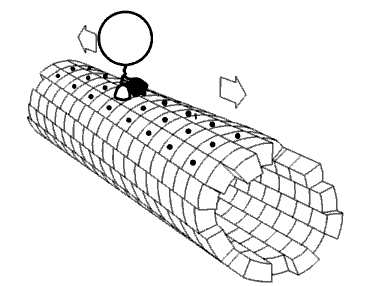
Photo from academic.microsoft.com
The outer membrane (OM) of Gram-negative bacteria is an asymmetric bilayer having phospholipids in the inner leaflet and lipopolysaccharides in the outer leaflet. This unique asymmetry and the complex carbohydrates… Click to show full abstract
The outer membrane (OM) of Gram-negative bacteria is an asymmetric bilayer having phospholipids in the inner leaflet and lipopolysaccharides in the outer leaflet. This unique asymmetry and the complex carbohydrates in lipopolysaccharides make it a daunting task to study the asymmetrical OM structure and dynamics, its interactions with OM proteins, and its roles in translocation of substrates, including antibiotics. In this study, we combine neutron reflectometry and molecular simulation to explore the physical properties of OM mimetics. There is excellent agreement between experiment and simulation, allowing experimental testing of the conclusions from simulations studies and also atomistic interpretation of the behavior of experimental model systems, such as the degree of lipid asymmetry, the lipid component (tail, head, and sugar) profiles along the bilayer normal, and lateral packing (i.e., average surface area per lipid). Therefore, the combination of both approaches provides a powerful new means to explore the biological and biophysical behavior of the bacterial OM.
Journal Title: Biophysical journal
Year Published: 2019
Link to full text (if available)
Share on Social Media: Sign Up to like & get
recommendations!